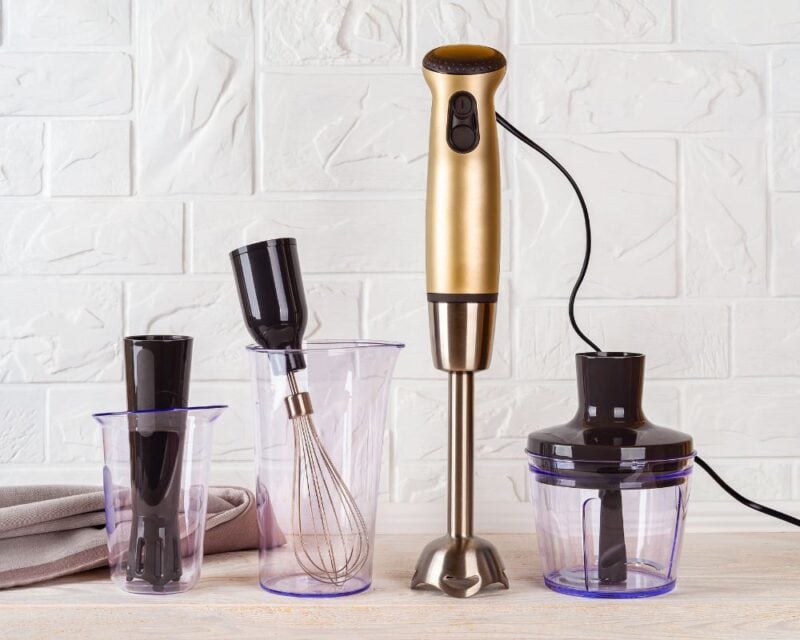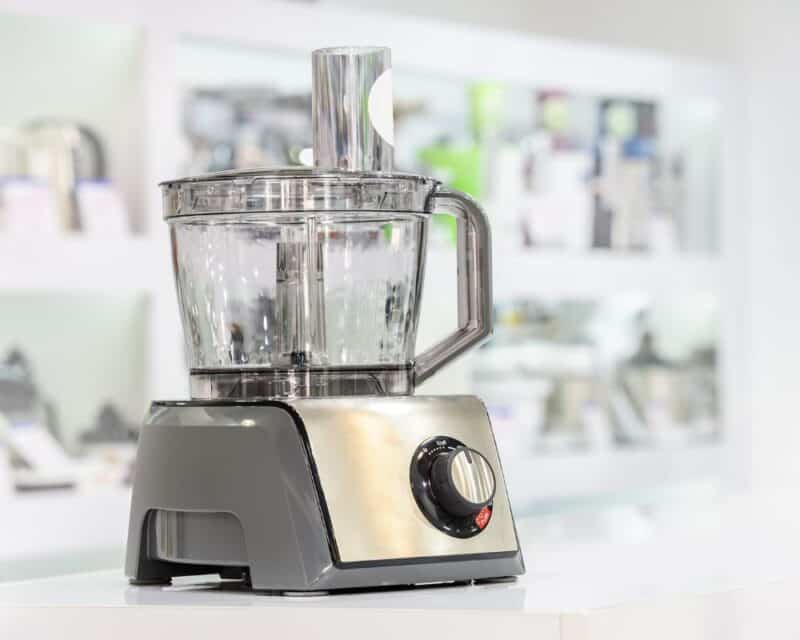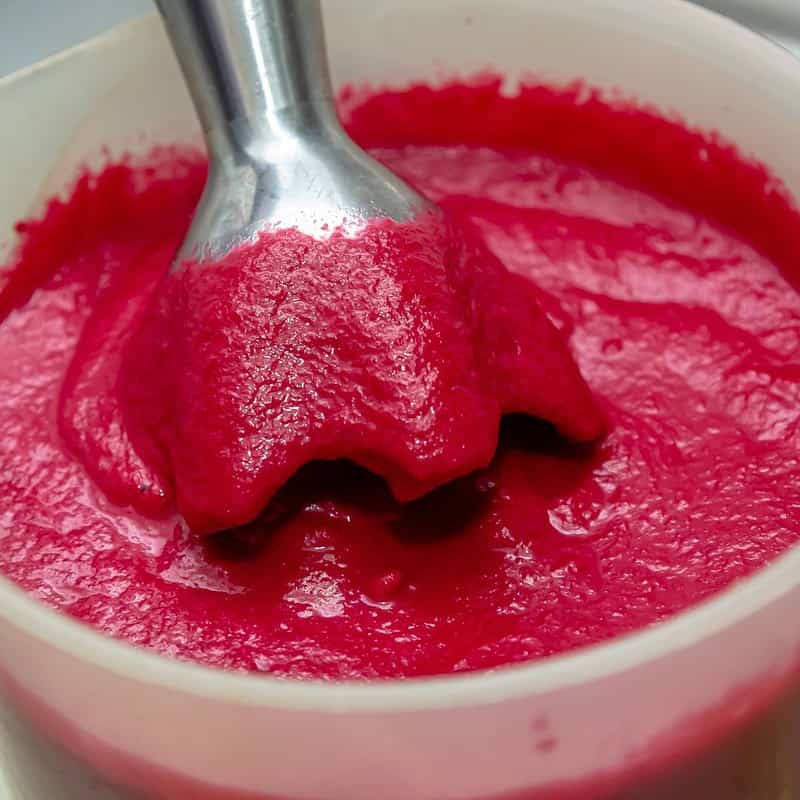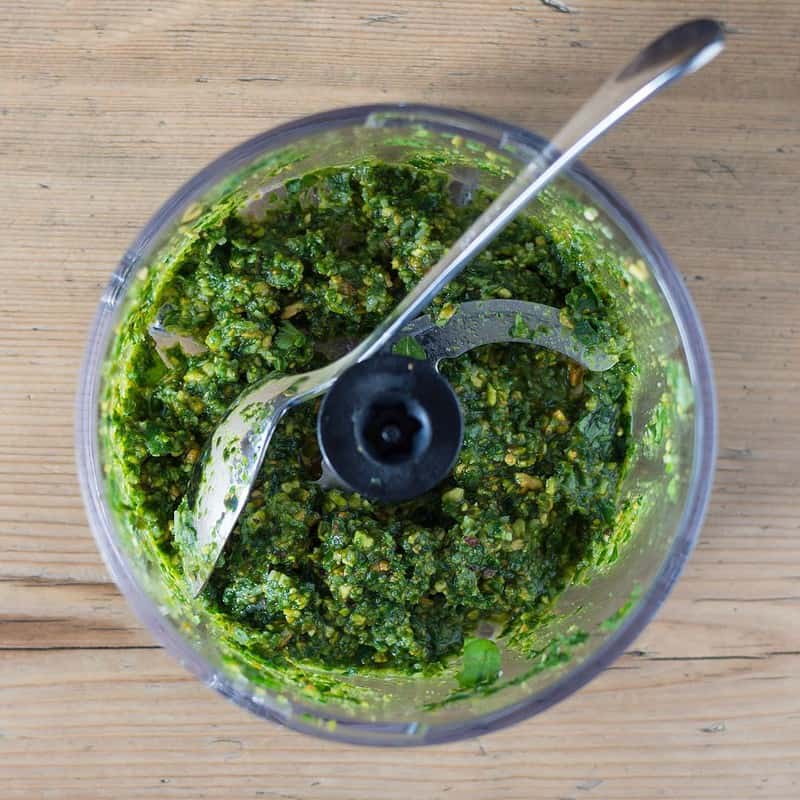The vast majority of people who enjoy spending time creating recipes in their kitchen wouldn’t be without having both an immersion blender and a food processor to hand.
Although they may seem to serve similar purposes at first glance, each tool has unique features and strengths that cater to different culinary tasks. Understanding the practical differences between an immersion blender and a food processor can empower all home chefs to make informed decisions about which tool is best suited for their cooking adventures.
Your Immersion Blender, the Handheld Hero

The immersion blender, often referred to as a stick or hand blender, is a compact, handheld device with a blending blade at one end. It’s designed to allow for direct blending within any container. This makes it ideal for tasks that require a quick, easy blend without the hassle of transferring ingredients from pot to gadget.
This feature really shines when making soups, sauces, and smoothies, as it offers the convenience of blending directly in the cooking vessel or glass.
One of the immersion blender’s standout qualities is its ability to create smooth, blended mixtures without the need for extra space or cleanup. It’s perfect for emulsifying dressings, whipping up a batch of mayonnaise, or pureeing cooked vegetables into a silky soup right on the stove.
Thanks to Its portability and ease of cleaning, often due to the detachable blades that can be washed separately, the immersion blender is an invaluable tool for cooks who value simplicity and efficiency.
The Food Processor, a Countertop Powerhouse

A food processor is a countertop appliance that excels in a variety of tasks, thanks to its more powerful motor and interchangeable blades and disks. It can chop, slice, shred, grind, and even knead dough, making it a multifunctional workhorse in the kitchen.
Your food processor can be viewed as the go-to gadget for more labor-intensive tasks that require precision and power, such as chopping nuts, kneading bread dough, slicing vegetables uniformly, or even grinding meat.
It offers a larger capacity than the immersion blender. That means your food processor is capable of handling bigger batches of ingredients. This makes it ideal for meal prep or recipes that call for multiple components to be processed at once.
Its versatility extends to creating smooth purees, such as hummus or pesto, where its powerful blades can ensure a perfectly smooth consistency that might sometimes be more challenging to achieve with an immersion blender.
Practical Differences Explained


The key practical differences between an immersion blender and a food processor lie in their intended use, capacity, and method of operation. The immersion blender is perfectly designed for blending and pureeing, especially when convenience and quick cleanup are priorities. It’s the tool of choice for liquid-based tasks and smaller jobs.
In contrast, the food processor is better suited for tasks that require chopping, slicing, or mixing dry ingredients, as well as recipes that benefit from its larger size and more robust power.
There is bound to be some overlap in what each appliance can achieve, so choosing between an immersion blender and a food processor comes down to the specific needs of your culinary tasks.
Both items deserve their place in your kitchen armory and both an immersion blender and food processor will prove invaluable when you are creating delicious recipes.
